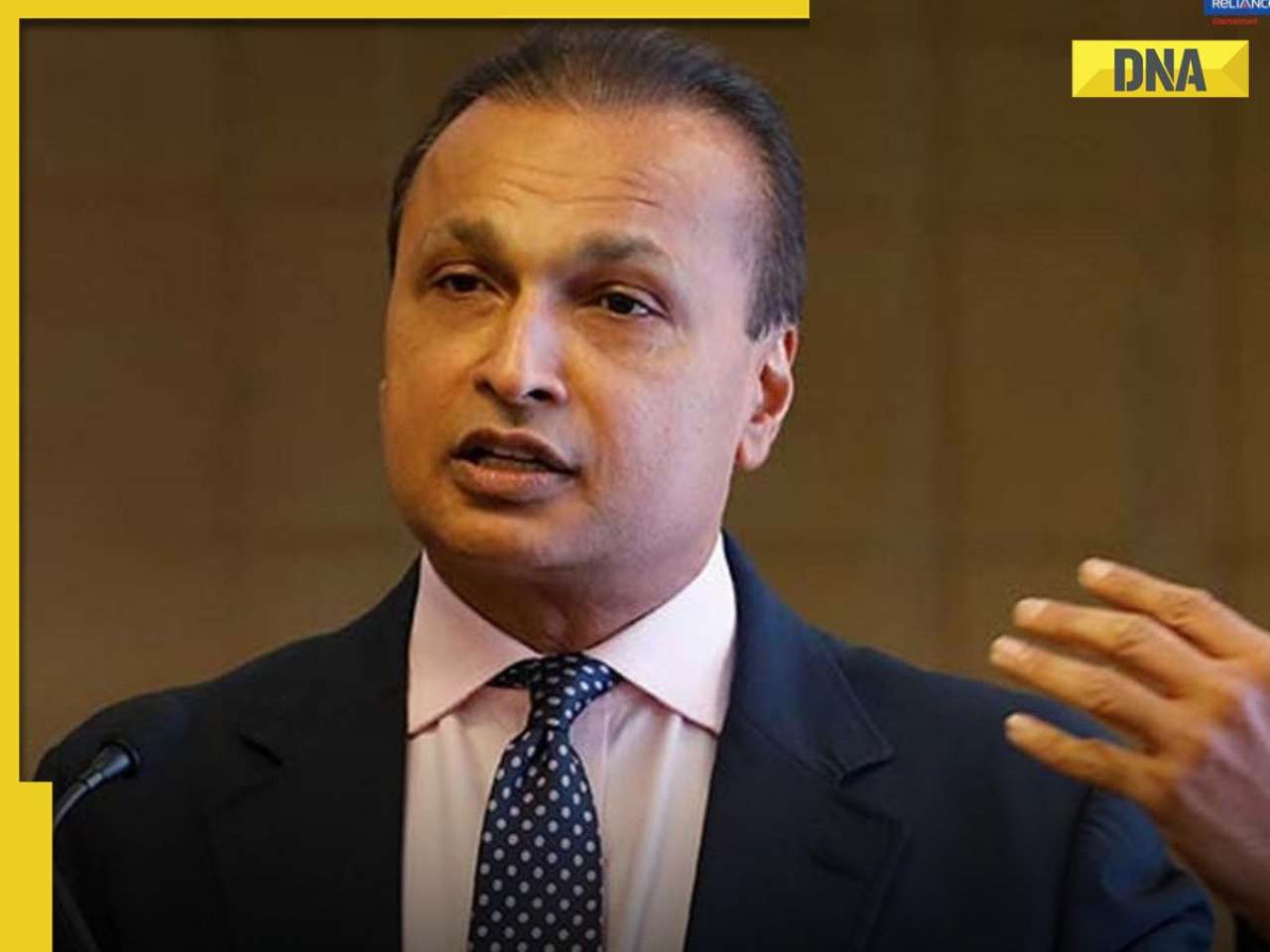India's airlines are expected to post a combined loss of $1.7 billion this fiscal, with a mammoth $1.5 billion of that coming from just the three full-service carriers, said CAPA
India retained the tag of being one of the fastest growing aviation markets in 2018, as the country added almost 22 million domestic fliers to take the total number of people in the skies last year at 138.97 million (117.16 million), a jump of almost 19%. In fact, growth in the domestic aviation market has been hovering around the 20% mark since at least 2016. But these booming passenger numbers have not translated into profits for the domestic airlines, which have been unable to raise fares in an extremely price-sensitive market. Airlines routinely announce sales, with ridiculously low fares, to fill up seats.
A senior official at a low-cost carrier (LCC) said more than 50% seats are usually being sold even below the cost by airlines due to intense competition. A high cost and an intensely competitive operating environment have meant almost all domestic airlines find it tough to make money as fares remain ridiculously low while costs continue to surge. The busiest domestic route (Delhi-Mumbai) often sees tickets priced as low as Rs 3,000 or even less. A surge in crude oil prices for much of 2018 hurt the airline bottomlines with the three listed airlines posting a combined loss of Rs 2,340 crore in one quarter (July-September 2018) alone.
For the December quarter, earnings numbers of two listed airlines have come in. Both have returned to profits but the profitability is markedly below year-ago levels. IndiGo declared a 75% year-on-year drop in net profit at Rs 190.90 crore, blaming it on a sharp increase in fuel costs and currency depreciation. The company had reported Rs 762 crore profit in the year-ago period. SpiceJet posted a 77% drop in net profit at Rs 55.07 crore against Rs 239.99 crore in the December quarter of the previous fiscal amid surging fuel costs.
Centre for Asia Pacific Aviation (CAPA)'s Kapil Kaul said earlier today that India's airlines are expected to post a combined loss of $1.7 billion this fiscal, with a mammoth $1.5 billion of that coming from just the three full-service carriers (FSCs) - Vistara, Jet Airways and IndiGo. The situation is expected to improve dramatically in 2019-20, with CAPA estimating combined airline losses to fall by a billion dollar to $500-700 million. But this is almost entirely due to the expectation that global crude prices will remain benign – not because airlines are doing anything much worthwhile to improve their balance sheets or pricing seats rationally.
An analyst tracking aviation with a Mumbai-based brokerage told DNA Money that since fuel accounts for 30-35% of an airline's costs, the expected softening in fuel prices in FY20 will automatically improve the health of airlines.

Like elsewhere, India's LCCs have managed to fare better than the FSCs almost always. In 2017, the LCCs held almost 60% of the market but by 2018 this increased to 70%. Also, the FSCs - Air India, Vistara and Jet Airways - continue to bleed far more than the LCCs. Not just high costs, aggressive capacity addition by IndiGo has also skewed the market dynamic. The airline's monthly departures went up by a fourth (by 8,603) between April and December 2018, from 31,922 to 40,525.
Among the FSCs, though none of the airlines is making money, Jet Airways is bleeding the most. Since last year, Jet has been facing trouble; the airline is in dire need of cash. Its existing equity partner, Etihad Airways, is believed to be in the fray to stitch a deal where promoter Naresh Goyal will likely cede control of the airline he built from scratch. Jet has been a significant player in the domestic market and its imminent downfall could cause severe turbulence – much like the demise of erstwhile Kingfisher Airlines did.
So, why is Jet floundering when the industry has been logging enviable growth and more people are taking to the skies? Well, for one, fares in India have remained at ridiculously low levels for months and on most occasions, the fares being charged does not even cover the cost of that seat! On top of this skewed pricing math, airlines continue to offer discounts and fire sales almost every second month in a bid to fill up planes. Currently, all airlines are enticing fliers with a Valentine's Day sale. The FSCs are facing the worst end of the stick because, to begin with, their costs are higher - they need to earn more per seat to break even. Also, they are unable to match LCCs like IndiGo in capacity addition.
In the new year, as Jet awaits rescue and Air India continues to get government dole, it is becoming increasingly clear that more passengers do not mean better profitability for Indian airlines. Unless cost structures are reworked, fares revised upwards and capacity addition plans are updated in line with the competition, more airlines could face turbulence.
TURBULENCE IN AIR
- Among the FSCs, though none of the airlines is making money, Jet Airways is bleeding the most
- Fares have remained at ridiculously low levels for months and on most occasions, the fares being charged does not even cover the cost of that seat
![submenu-img]() This singer left Air Force, sang at churches, became superstar; later his father killed him after...
This singer left Air Force, sang at churches, became superstar; later his father killed him after...![submenu-img]() Indian-origin man says Apple CEO Tim Cook pushed him...
Indian-origin man says Apple CEO Tim Cook pushed him...![submenu-img]() Anil Ambani’s Rs 96500000000 Reliance deal still waiting for green signal? IRDAI nod awaited as deadline nears
Anil Ambani’s Rs 96500000000 Reliance deal still waiting for green signal? IRDAI nod awaited as deadline nears![submenu-img]() Most popular Indian song ever on Spotify has 50 crore streams; it's not Besharam Rang, Pehle Bhi Main, Oo Antava, Naina
Most popular Indian song ever on Spotify has 50 crore streams; it's not Besharam Rang, Pehle Bhi Main, Oo Antava, Naina![submenu-img]() Did Diljit Dosanjh cut his hair for Amar Singh Chamkila? Imtiaz Ali reveals ‘he managed to…’
Did Diljit Dosanjh cut his hair for Amar Singh Chamkila? Imtiaz Ali reveals ‘he managed to…’ ![submenu-img]() DNA Verified: Is CAA an anti-Muslim law? Centre terms news report as 'misleading'
DNA Verified: Is CAA an anti-Muslim law? Centre terms news report as 'misleading'![submenu-img]() DNA Verified: Lok Sabha Elections 2024 to be held on April 19? Know truth behind viral message
DNA Verified: Lok Sabha Elections 2024 to be held on April 19? Know truth behind viral message![submenu-img]() DNA Verified: Modi govt giving students free laptops under 'One Student One Laptop' scheme? Know truth here
DNA Verified: Modi govt giving students free laptops under 'One Student One Laptop' scheme? Know truth here![submenu-img]() DNA Verified: Shah Rukh Khan denies reports of his role in release of India's naval officers from Qatar
DNA Verified: Shah Rukh Khan denies reports of his role in release of India's naval officers from Qatar![submenu-img]() DNA Verified: Is govt providing Rs 1.6 lakh benefit to girls under PM Ladli Laxmi Yojana? Know truth
DNA Verified: Is govt providing Rs 1.6 lakh benefit to girls under PM Ladli Laxmi Yojana? Know truth![submenu-img]() Alia Bhatt wears elegant saree made by 163 people over 1965 hours to Met Gala 2024, fans call her ‘princess Jasmine’
Alia Bhatt wears elegant saree made by 163 people over 1965 hours to Met Gala 2024, fans call her ‘princess Jasmine’![submenu-img]() Jr NTR-Lakshmi Pranathi's 13th wedding anniversary: Here's how strangers became soulmates
Jr NTR-Lakshmi Pranathi's 13th wedding anniversary: Here's how strangers became soulmates![submenu-img]() Streaming This Week: Heeramandi, Shaitaan, Manjummel Boys, latest OTT releases to binge-watch
Streaming This Week: Heeramandi, Shaitaan, Manjummel Boys, latest OTT releases to binge-watch![submenu-img]() Remember Ayesha Kapur? Michelle from Black, here's how actress, nutrition coach, entrepreneur looks after 19 years
Remember Ayesha Kapur? Michelle from Black, here's how actress, nutrition coach, entrepreneur looks after 19 years![submenu-img]() Remember Heyy Babyy's cute 'Angel' Juanna Sanghvi? 20 year-old looks unrecognisable now, fans say 'her comeback will...'
Remember Heyy Babyy's cute 'Angel' Juanna Sanghvi? 20 year-old looks unrecognisable now, fans say 'her comeback will...'![submenu-img]() DNA Explainer: Why Harvey Weinstein's rape conviction was overturned, will beleaguered Hollywood mogul get out of jail?
DNA Explainer: Why Harvey Weinstein's rape conviction was overturned, will beleaguered Hollywood mogul get out of jail?![submenu-img]() What is inheritance tax?
What is inheritance tax?![submenu-img]() DNA Explainer: What is cloud seeding which is blamed for wreaking havoc in Dubai?
DNA Explainer: What is cloud seeding which is blamed for wreaking havoc in Dubai?![submenu-img]() DNA Explainer: What is Israel's Arrow-3 defence system used to intercept Iran's missile attack?
DNA Explainer: What is Israel's Arrow-3 defence system used to intercept Iran's missile attack?![submenu-img]() DNA Explainer: How Iranian projectiles failed to breach iron-clad Israeli air defence
DNA Explainer: How Iranian projectiles failed to breach iron-clad Israeli air defence![submenu-img]() This singer left Air Force, sang at churches, became superstar; later his father killed him after...
This singer left Air Force, sang at churches, became superstar; later his father killed him after...![submenu-img]() Most popular Indian song ever on Spotify has 50 crore streams; it's not Besharam Rang, Pehle Bhi Main, Oo Antava, Naina
Most popular Indian song ever on Spotify has 50 crore streams; it's not Besharam Rang, Pehle Bhi Main, Oo Antava, Naina![submenu-img]() Did Diljit Dosanjh cut his hair for Amar Singh Chamkila? Imtiaz Ali reveals ‘he managed to…’
Did Diljit Dosanjh cut his hair for Amar Singh Chamkila? Imtiaz Ali reveals ‘he managed to…’ ![submenu-img]() Watch: Arti Singh gets grand welcome at husband Dipak's house with fairy lights and fireworks, video goes viral
Watch: Arti Singh gets grand welcome at husband Dipak's house with fairy lights and fireworks, video goes viral![submenu-img]() Meet actress, who belongs to family of superstars, quit films after 19 flops, no single hit in 9 years; is still worth…
Meet actress, who belongs to family of superstars, quit films after 19 flops, no single hit in 9 years; is still worth…![submenu-img]() IPL 2024: Suryakumar Yadav's century power MI to 7-wicket win over SRH
IPL 2024: Suryakumar Yadav's century power MI to 7-wicket win over SRH![submenu-img]() DC vs RR, IPL 2024: Predicted playing XI, live streaming details, weather and pitch report
DC vs RR, IPL 2024: Predicted playing XI, live streaming details, weather and pitch report![submenu-img]() Watch: Team India’s new jersey for T20 World Cup 2024 unveiled
Watch: Team India’s new jersey for T20 World Cup 2024 unveiled![submenu-img]() DC vs RR IPL 2024 Dream11 prediction: Fantasy cricket tips for Delhi Capitals vs Rajasthan Royals
DC vs RR IPL 2024 Dream11 prediction: Fantasy cricket tips for Delhi Capitals vs Rajasthan Royals![submenu-img]() IPL 2024: Kolkata Knight Riders take top spot after 98 runs win over Lucknow Super Giants
IPL 2024: Kolkata Knight Riders take top spot after 98 runs win over Lucknow Super Giants![submenu-img]() Indian-origin man says Apple CEO Tim Cook pushed him...
Indian-origin man says Apple CEO Tim Cook pushed him...![submenu-img]() Meet man whose salary was only Rs 83 but his net worth grew by Rs 7010577000000 in 2023, he is Mukesh Ambani's...
Meet man whose salary was only Rs 83 but his net worth grew by Rs 7010577000000 in 2023, he is Mukesh Ambani's...![submenu-img]() Job applicant offers to pay Rs 40000 to Bengaluru startup founder, here's what happened next
Job applicant offers to pay Rs 40000 to Bengaluru startup founder, here's what happened next![submenu-img]() Viral video: Family fearlessly conducts puja with live black cobra, internet reacts
Viral video: Family fearlessly conducts puja with live black cobra, internet reacts![submenu-img]() Woman demands Rs 50 lakh after receiving chicken instead of paneer
Woman demands Rs 50 lakh after receiving chicken instead of paneer





































)




)




)
)
)
)
)
)